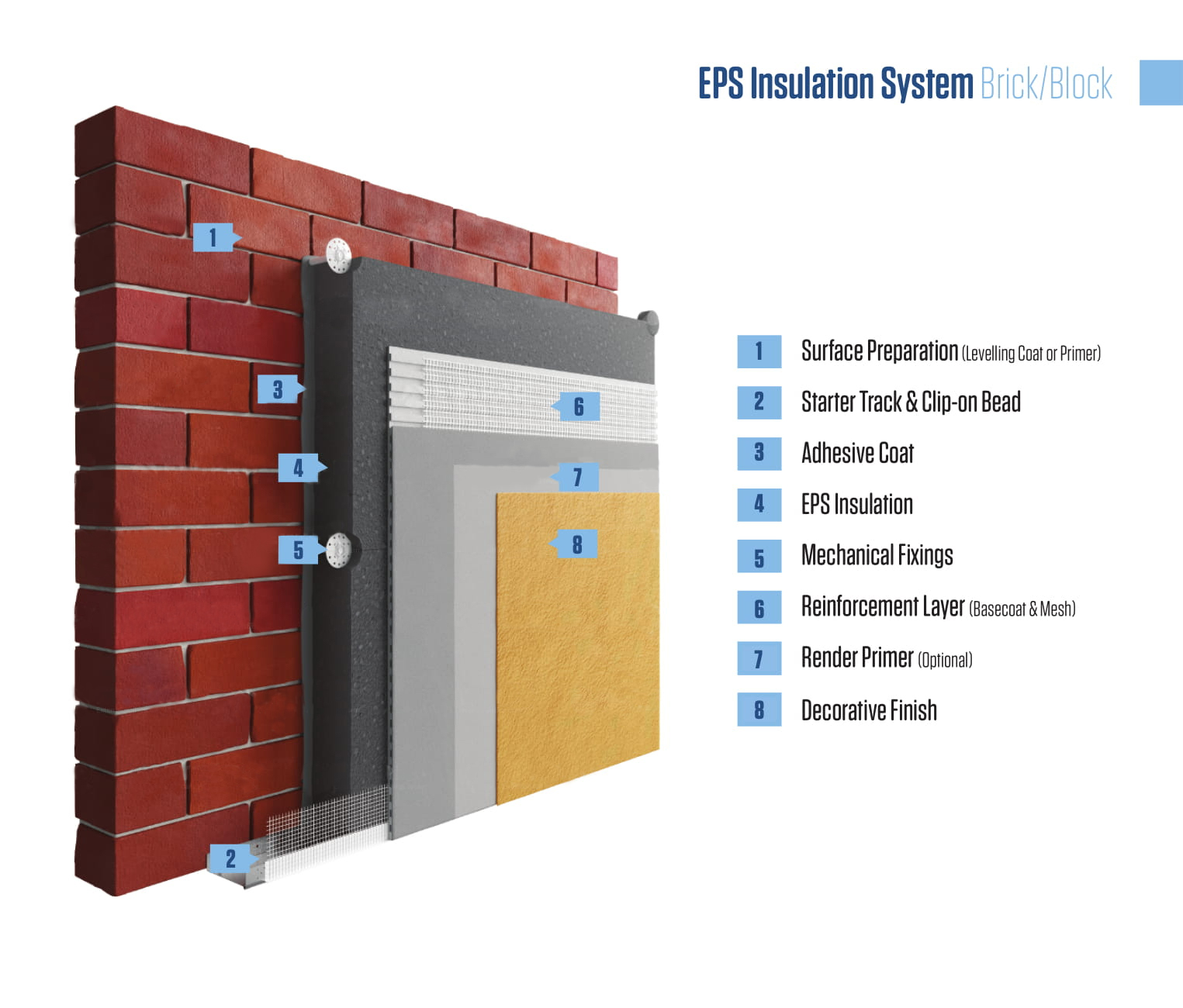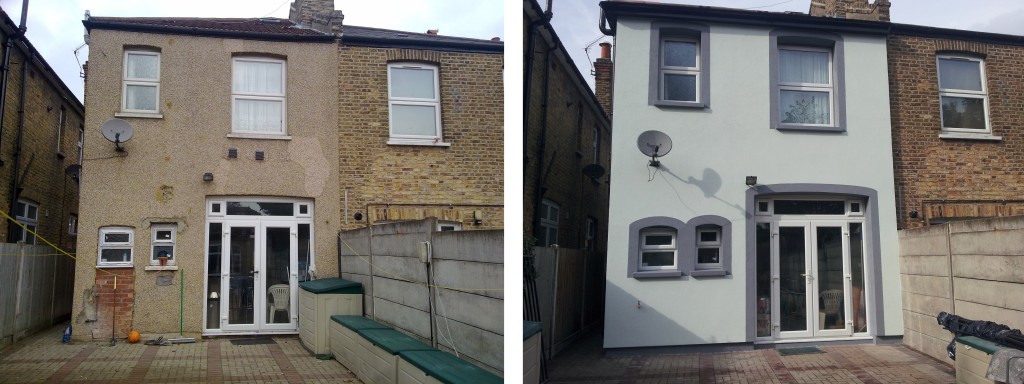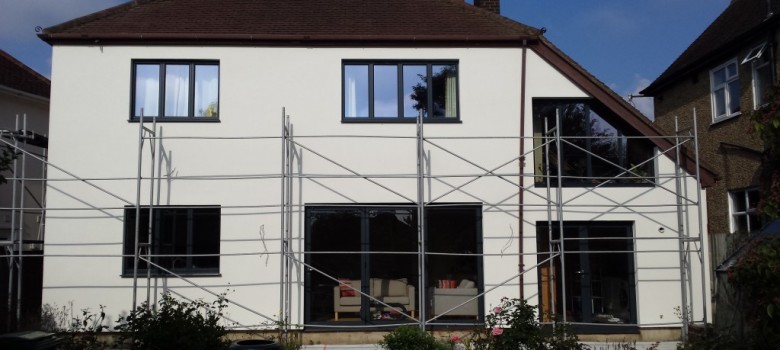Heating costs are on the up, and in the UK we have a challenge to keep warm whilst not spending an absolute fortune on our energy bills. In addition to this challenge (now into our 2020’s) as a nation we have stringent carbon targets to meet later on this decade.
With UK properties being one of the leakiest in Europe, external wall solid wall insulation is a fantastic energy efficiency measure to help up not only reduce carbon, but keep heating bill rises in check.
Why choose external solid wall insulation?
Most properties built prior to 1930 were constructed with solid walls, so they don’t have cavities that can be injected with insulation. These solid wall properties can be insulated with external solid wall insulation. The purpose of insulating in this manner is to slow the movement of heat out through the walls, thereby dramatically reducing heating demand.
The embedded video produced by us and one of our partners shows the typical external wall insulation installation process.
In most cases, homeowners get in a professional to install solid wall insulation; it is not normally considered a DIY job. Because the insulating process involves covering the original brickwork, the process can significantly alter the appearance of the property. Since the outside walls are highly visible, it is advisable to get someone who knows what they are doing to install it!
There are many types of insulation products that can be attached to the outside of the home: expanded polystyrene, mineral wool and phenolic resin (K5), woodfibre and even cork! Expanded polystyrene (known as EPS) is certainly the most popular, since it is the most cost effective means of carrying out the works. Phenolic resin (K5 boards) is used when space is a premium, since you can use less of this type of insulation to achieve the required U-value.
Mineral wool can also be used to insulate solid walls and some people choose it because it not only provides an open vapour system, but it is a great acoustic insulator. If it is picked for this reason, it is very important that no acrylic render is used to finish the project, since it is not breathable and therefore defeats the object!
You may choose to use woodfibre if you want the most breathable and natural insulation materials – however the system itself is very expensive compared to the EPS system.
External wall insulation must adhere to building regulations
When solid wall insulation is installed on the external walls of the home, it must adhere to building regulations. In this case it is referring to the thermal performance of the insulation; the solid wall insulation must achieve a U-value of 0.30 watts/m2k. With expanded polystyrene, this means that at least 90mm of insulation needs to be used – but obviously the thicker the material, the better its insulating performance.
For example, according to our competent U-value assessor, James Alcock a typical solid brick wall would require 90mm of the EPS system to achieve the desired retrofit building regulations u-value. Whereas to achieve the same value only 60mm of the K5 insulation board & system would be required.
For mineral wool you need 110mm of insulation to achieve the required U-value and for the the woodfibre insulation you would require 110-120mm of insulation to achieve the same energy efficiency standards.
External wall insulation sometimes needs planning permission
According to the planning portal, planning permission is not normally required for installing solid wall insulation, provided the external appearance of the property doesn’t change. If your property is brick and unpainted, changing its colour with render will require planning permission. Also, if the building is listed or is in a conservation area you should consult your local planning authority.
From our experience of installing solid wall insulation across London, it seems there is no standard approach to how the councils judge what is acceptable and what isn’t, so if in doubt, it is probably worth asking the question!
How is external wall insulation installed?
 Firstly, if the property has existing render, a render test must be carried out to see if it is strong enough to hold the insulation. If not, all the existing render will need to be removed prior to attaching the insulation to the brickwork. If the render test shows that the existing render is firmly held in place, the render can simply be smoothed, ready for the insulation to be applied directly on to it.
Firstly, if the property has existing render, a render test must be carried out to see if it is strong enough to hold the insulation. If not, all the existing render will need to be removed prior to attaching the insulation to the brickwork. If the render test shows that the existing render is firmly held in place, the render can simply be smoothed, ready for the insulation to be applied directly on to it.
Another important step prior to installing any external wall insulation is to remove any pipework from the outside of the building. These will be reinstalled at the end of the process (and maybe extended in some instances as necessary); this is one of main reasons that the insulating process is expensive and time-consuming.
Applying the external wall insulation and finishing
The process is relatively complex, but the basic steps are outlined below:
- Insulating panels are fixed to the wall using adhesive mortar.
- Plastic capped fixings are driven through the insulating panels and around their perimeter into the wall to tie the panels securely to the wall.
- Mortar is then applied over the insulating panels and the fixings.
- An insulating mesh is then sunk into the mortar to hold the panels in position.
- The mortar is sanded and painted with primer to prepare it for the render
- The Coloured render finish is applied (available in any colour).
Below you can watch a video where we demonstrate how solid walls are insulated externally:
What external wall insulation and finishes are possible?
As the insulation goes on the outside of your house, it is important that you get the finish that you want.
On the whole, the most cost-effective way of insulating your solid walls is to finish it with a simple white render. However there is a huge variety of finishes possible: smooth, textured or painted, tiled, panelled, pebble-dashed or finished with realistic brick slips.
External solid wall insulation and damp
External wall insulation is a great way to protect against penetrating damp, creating a new weatherproof layer on the outside of the building, and slowing the movement of heat through the walls. Another advantage of solid wall insulation is that it will cause the temperature of the walls themselves to rise. This means if there is lots of water vapour in the air (from cooking or washing for example), this will no longer condense on these walls.
While obviously this is a benefit, it is still important to consider ventilation in the home – regardless of whether you insulate or not. This can be done by installing more vents or by making behavioural changes like opening windows and doors while cooking.
Cost and financing external wall insulation
The cost of solid wall insulation is roughly £100/m2, averaging between £6000 – £12,000 for a standard semi detached house, so it is not cheap. However, it can be really worthwhile in the long run. There are occasionally local council grants available for eligible people, and some companies offer finance so it is worth checking.
Currently, the Government Green Homes Grant is available to apply for if you meet the eligibility requirements. For external wall insulation, your property must be solid wall and it must be located in England to be eligible for the Green Homes Grant. The grant offers up to £10,000 off the full cost of the installation which will bring down the cost significantly, and in some cases the grant will cover the entirety of the cost. This scheme is running until March 2022, so there is still plenty of time to get your hands on it!

Advantages of external solid wall insulation
- The insulation will take the U-value of your walls down to just 0.3w/m2k, equivalent to a brand new cavity wall built today – therefore your heating bills will be significantly lower.
- Solid wall insulation stops penetrating damp.
- The insulation can improve the appearance of your home – especially if you are replacing pebbledash.
- It can also really help reduce noise entering the home, so if you live on a busy road it might be just the thing
- Since the walls get warmer, they act as a heat store so rooms will take longer to cool down.
For a more detailed look at the advantages of solid wall insulation please click here.
Installing external solid wall insulation
Interested in getting external wall installation? Lucky for you, we work in partnership with EWI Store who specialise in external wall insulation and render systems! They have a great team who will be happy to advise you on any queries, and can help find local approved installers.
EWI Store are also helping with Green Homes Grant enquiries, and can help you find Trustmark approved installers who are offering the grant.

[contact-form-7]
The post External Solid Wall Insulation appeared first on TheGreenAge.



